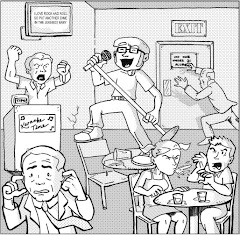Halloween has long been my favorite holiday, so I’ve decided to return to reviewing comic books with some regularity this month. Every week this month, I’ll post at least one special Halloween-oriented review, criticizing the issue based on its reverence for this hallowed holiday season through four distinct categories worth up to five points each. The comic that earns the total possible 20 points could be one of the best Halloween issues ever!
Twisted Tales, November 1987, Eclipse Comics
writer: Bruce Jones
artists: Rick Stasi, Jim Mooney, Scott Saavedra, Henry Mayo
letterers: Mike Worley, Kurt Hathaway, Carrie Spiegle
colorists: Marcus David, Barbara Marker, Henry Mayo
PREMISE: Twisted Tales is a compilation of, well, twisted tales by favorite comics horror writer Bruce Jones. While I wouldn’t call this a definitive collection of work, it is a diverse collection of psychologically-slated stories of macabre intrigue. For someone like me, unfamiliar with Jones’ work past his run on The Incredible Hulk a few years ago, this collection offers insight into the way a mastermind spins yarns, and his skills in characterization and surprising plot twists certainly make it easy to get tangled up. As a proverbial graphic Twilight Zone experience, Twisted Tales earns three out of five points.
STORY: This issue contains three twisted tales, and to be honest the lead story is my least favorite. “Termites from Mars” is a Goonies-esque adventure, taking place in the 1956 suburban town of Crystal Falls. Jones takes his sweet time establishing his four major players, pre-teens all fulfilling some stereotypical role as the burgeoning adolescent; one plays peeping tom to one of the older girls from school as she changes in front of her bedroom window, another loves racing model trains in the basement, another is the fat, unfortunate comic foil. The lead character, Brian, loves science fiction and is drawn to the premiere of the film Termites from Mars at their local beloved Rialto theater. When the fat kid gets his friends thrown out of the picture, Brian vows to reclaim his stolen pocket knife from their angry, old reclusive neighbor. When the kids run into some gangsters along the way, a cemetery romp results in the lead thug getting mysteriously devoured by, you guessed it, rabid termites. Jones must’ve delighted in the details here, but the story ultimately fell flat with me, as the “twisted” part was severely stunted by the kids’ perpetually innocent perspective, and the overall blissfully average setting.

“Fraternity” is much more engaging; Mr. Soames is a petty, ugly little man that just wants the affection of a woman and flails in the face of constant rejection. When he uses a tragic newspaper headline to elicit the sympathy of a lady, claiming a slain victim was in fact his brother, he finds a modicum of success and develops his strategy into a lucky streak. Unfortunately, he quickly feels that someone is watching him, and when he confronts the shadowy figure, his ghoulish new “brothers” consume him! Short and sweet, I liked this tale for its tongue-in-cheek woe-is-me vibe . . . and it goes to show just how scary the world was before the Internet!

Finally, in “Night Dive,” a down-and-out boat keeper runs into an old high school acquaintance, and in a bid to appear more successful feigns a lifestyle worthy of the local yacht club. When an old man approaches them about finding a sunken treasure, they jump at the chance, and when our boatman kills his acquaintance to claim the treasure for himself, he finds himself a part of another exclusive club, where he does indeed have his own locker . . . right next to Davy Jones’! Hey, I’d take any hell that involves doting mermaids, though, as our anti-hero himself claims, even if they are “frustrating on a date.”
These three twisted tales are so diverse in their subject matter, even if I didn’t like one, I was sure to like one of the others -- which is perhaps exactly what Jones and Eclipse Comics intended with this compilation. For their sheer variety in style and psychological horror, I’m giving this issue a full five points.
ART: Twisted Tales is a writer spotlight, but fortunately the art isn’t too shabby, either, each tale drawn in the way the author might’ve intended, considering the subject matter. “Termites” has a very traditional style, and “Night Dive” is a bit more flamboyant, but “Fraternity” stands out the most, as Scott Saavedra’s pencils are wild, angular, and almost satirical in their flexibility, while still retaining the solid expressionism needed to sympathize with the main character. Honestly, it saves the whole collection from an otherwise unfortunately standard look, so I’ll give the issue as a whole three out of five points.

PACKAGING: Ah, the reason I picked up this issue in the first is its awesome cover by Dave Stevens -- yes, that Dave Stevens, of Rocketeer fame. Just look at that ghoul leaning into some Pat Benatar lookalike -- I was totally intrigued as to what their story might be, but unfortunately this doesn’t reflect any of the issue’s content. Still, the thing is bound in a prestige format, very durable and for the original cover price of $3.95 is a steal, even in 1987. Thanks to Stevens, Twisted Tales earns four out of five points.
TOTAL: Fifteen points, with a solid third of them awarded to the plots themselves -- what else would one expect from a writer’s spotlight? Further, what better way to celebrate Halloween than with the concept of the horror story? I mean, kids can just as easily dress up as pretty princesses and brightly colored superheroes for this hallowed holiday, but many prefer ghouls, monsters, witches, and ghosts. Bruce Jones holds up that mirror and proves, we’re all a little twisted sometimes.

















